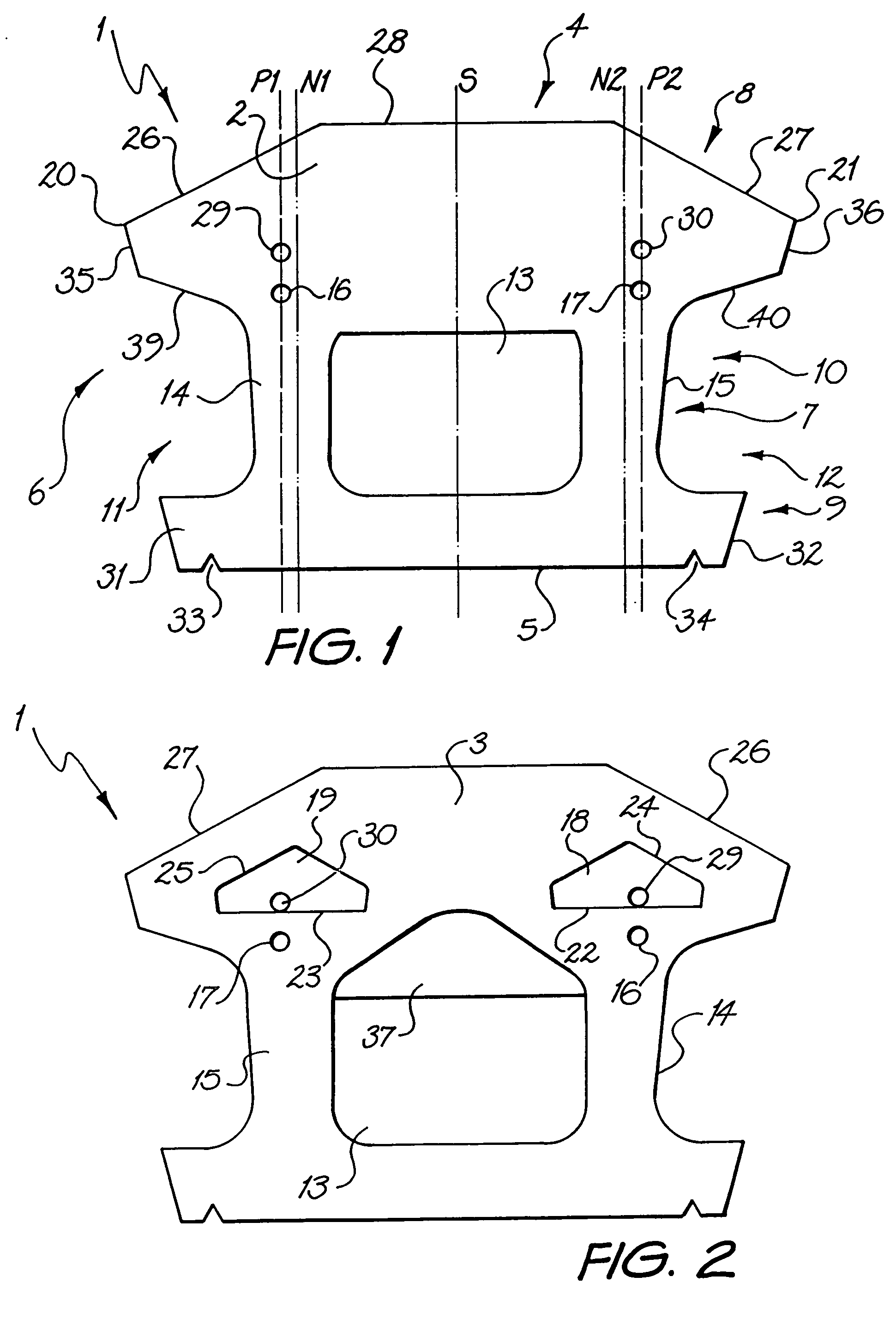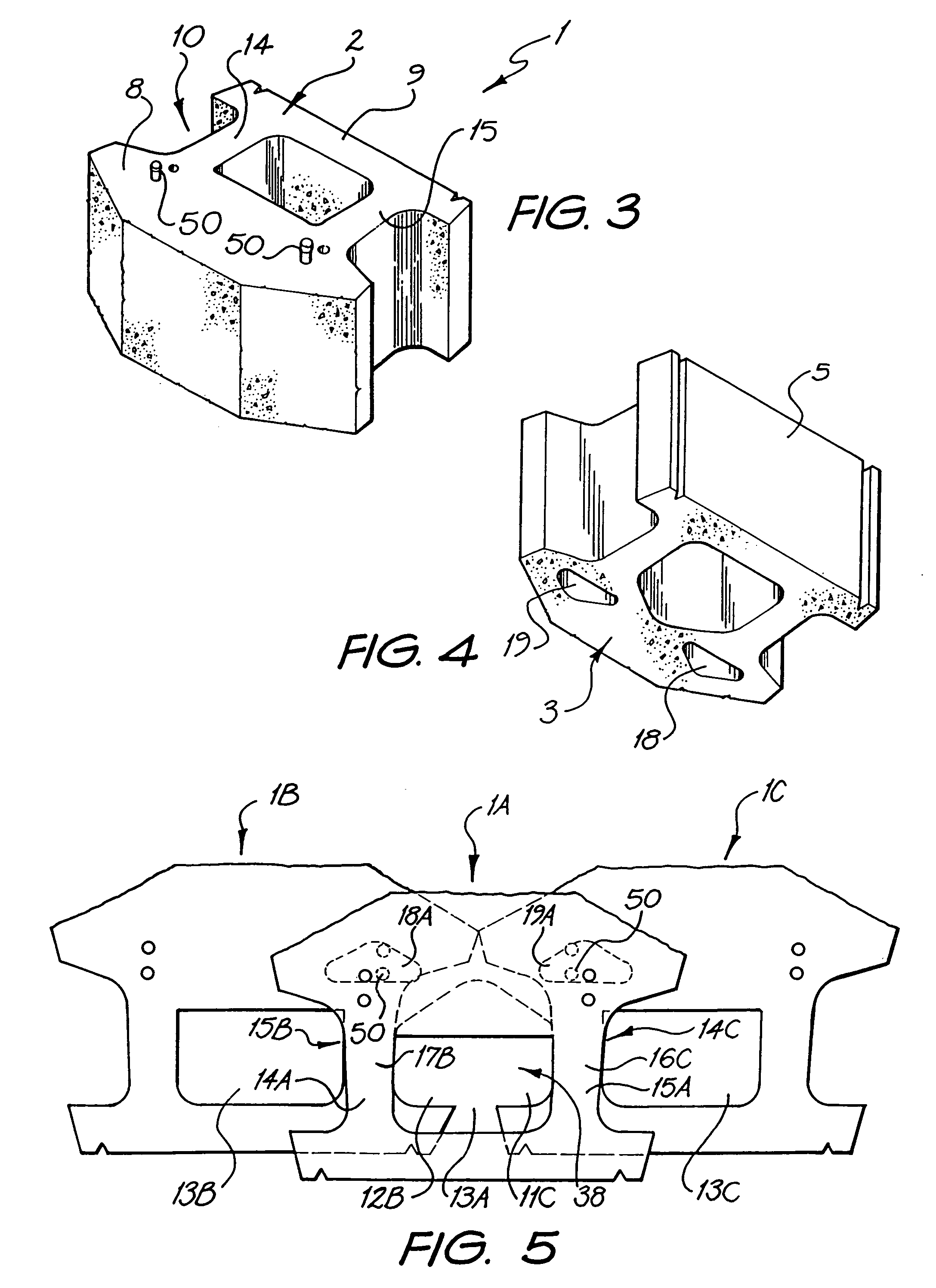Retaining wall block
a technology of retaining walls and blocks, applied in the direction of excavations, embankments, construction, etc., can solve the problems of many segmental wall designs that cannot accommodate anchoring posts, and it is not always feasible to extend geosynthetic reinforcement behind the wall, so as to reduce or zero predetermined setbacks
- Summary
- Abstract
- Description
- Claims
- Application Information
AI Technical Summary
Benefits of technology
Problems solved by technology
Method used
Image
Examples
Embodiment Construction
[0046]Referring to FIGS. 1 to 4 there is shown retaining wall block 1 according to a preferred embodiment of the present invention. Block 1 is made of a rugged, weather resistant material, preferably pre-cast concrete. Other suitable materials are plastic, reinforced fibers, wood, metal and stone. Block 1 has parallel top face 2 and bottom face 3, front face 4, rear face 5 and first and second side wall faces 6 and 7. Front face 4 and rear face 5 each extend from top face 2 to bottom face 3 and side wall faces 6, 7 extend from top face 2 to bottom face 3 and from front face 4 to rear face 4. Block 1 is generally symmetrical about vertical plane of symmetry S.
[0047]The integrally formed block 1 takes the form of body portion 8, head portion 9 and neck portion 10 connecting body portion 8 and head portion 9. Front face 4 forms part of body portion 8, while rear face 5 forms part of head portion 9. The body, head and neck portions 8, 9, and 10 each extend between top and bottom faces 2...
PUM
 Login to View More
Login to View More Abstract
Description
Claims
Application Information
 Login to View More
Login to View More - R&D
- Intellectual Property
- Life Sciences
- Materials
- Tech Scout
- Unparalleled Data Quality
- Higher Quality Content
- 60% Fewer Hallucinations
Browse by: Latest US Patents, China's latest patents, Technical Efficacy Thesaurus, Application Domain, Technology Topic, Popular Technical Reports.
© 2025 PatSnap. All rights reserved.Legal|Privacy policy|Modern Slavery Act Transparency Statement|Sitemap|About US| Contact US: help@patsnap.com



